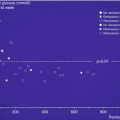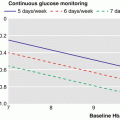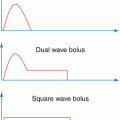A. Randomized, controlled trials including:
Multicenter trial
Meta-analysis incorporating quality ratings
Compelling nonexperimental evidence (i.e., “insulin to treat diabetes”)
B. Well-conducted cohort studies including:
Prospective cohort studies or registry
Meta-analysis of cohort studies
Well-conducted case–control studies
C. Poorly controlled or uncontrolled studies including:
Randomized clinical trials with flaws
Observational studies with high potential for bias
Case series or case reports
E. Expert consensus or clinical experience
Nevertheless, it is important to have written recommendations to improve DKA management and increase the effectiveness and safety of clinical practice. Moreover, it should be evident that when new guidelines are introduced, healthcare professionals should be made aware of them and receive appropriate training in their use [4].
In Italy, pediatric diabetologists sought to write and implement recommendations for DKA management from an evidence-based pathway in an attempt to reduce the considerable variability in management among pediatric centers and improve overall treatment of pediatric DKA. At the ISPAD Research School for Physicians in Milan 2015, the ISPED and ISPAD guidelines for DKA treatment were compared, and proceedings from this meeting are presented here.
The primary goals of DKA therapy are to correct dehydration and electrolyte depletion and reverse ketoacidosis. The acidosis is corrected by giving fluid, electrolytes, and insulin. Careful monitoring of the course of treatment is essential to avoid and rapidly identify complications of DKA and its treatment, especially cerebral edema (CE) and hypokalemia. It is important to realize that DKA primarily is a state of insulin deficiency and not an excess of glucose. When treating with fluid and insulin, the blood glucose level will inevitably decrease; therefore, glucose must be added to the fluid regimen to prevent the development of hypoglycemia. There has been a trend to use lower initial doses of insulin [5], but it is crucially important to administer enough insulin to ensure a progressive decrease in the serum level of beta-hydroxybutyrate (BOHB) and rise in blood pH.
The biochemical criteria of DKA are blood glucose >11 mmol/l (200 mg/dl), venous pH < 7.3, serum HCO3 < 15 mmol/l, and blood ketones (beta-hydroxybutyrate, BOHB) >3.0 mmol/l.
The severity of DKA is determined by the degree of acidosis: (1) mild if venous pH >7.2 and <7.3, bicarbonate <15 mmol/L; (2) moderate if venous pH >7.1 and <7.2, bicarbonate <10 mmol/L; and (3) severe if venous pH <7.1, bicarbonate <5 mmol/L.
Accurate assessment and management of dehydration is the cornerstone of DKA treatment. Assessment of the degree of dehydration has traditionally been according to clinical criteria, including peripheral tissue perfusion and indicators of hemodynamic status. The severity of dehydration varies considerably (between 1 and 22 % in one study [6]), and although it is difficult to accurately assess the degree of dehydration, most patients are between 5 and 10 % dehydrated [7]. A conservative empirical approach may be advocated: an initial assumption of 7–9 % dehydration is a reasonable figure upon which to base rehydration calculations in most patients [6]. Rehydration should take place over a 48-h period, with normal or at least half-normal saline and adequate potassium replacement. Ongoing therapy should include frequent estimates of dehydration and electrolyte status as recommended by the recent ISPAD guidelines [3].
Patients with a mixed picture of DKA and HHS (hyperglycemic hyperosmolar syndrome) typically are more severely dehydrated and need more fluid than classic DKA in whom acidosis is the primary problem. During the rehydration phase, these patients will need more than 1.5× maintenance [3].
2.1 ISPAD Guidelines
The ADA evidence grading is used in the ISPAD guidelines. For detailed references, see Wolfsdorf et al. [3].
2.2 Water and Salt Replacement
If needed, volume expansion to restore peripheral circulation (resuscitation) should begin immediately with an isotonic solution (0.9 % saline) (E). Where it is clinically indicated, the volume typically is 10–20 mL/kg over 1–2 h and may be repeated until tissue perfusion is adequate (E). Crystalloid rather than colloid fluids should be used (C). Subsequent fluid management should be with 0.9 % saline for at least 4–6 h (C,E). Thereafter, deficit replacement should be with a solution that has a tonicity equal to or greater than 0.45 % saline with added potassium chloride, phosphate, or acetate (C, E). The rate of IV fluid should be calculated to rehydrate evenly over at least 48 h (C, E). It is important to infuse fluid each day at a rate rarely in excess of 1.5–2 times the usual daily maintenance (E), and urinary losses should not be added to the calculation of replacement fluid (E). The use of tables with fluid volumes based on body weight is safer than reliance on calculating fluid volumes in emergency situations. The sodium content of the fluid may need to be increased if the measured serum sodium is low and does not rise appropriately as the plasma glucose concentration falls (C). The use of large amounts of 0.9 % saline, however, may be associated with the development of hyperchloremic metabolic acidosis (C).
When oral fluid is tolerated, IV fluid should be reduced accordingly so that the sum of IV and oral fluids does not exceed the calculated IV rate (i.e., not in excess of 1.5–2 times maintenance fluid rate). This fluid restriction should be applied for 48 h from admission (72 h if there is severe hyperosmolality at onset of treatment).
2.3 Insulin Therapy
Insulin infusion should be started after the patient has received initial volume expansion, approximately 1–2 h after starting fluid replacement therapy (C). If profound hypo-K <2.3 mmol/l, defer insulin. Begin with 0.025 U/kg/h when s-K has risen to ≥2.5 mmol/l [8]. An epidemiologic study showed that when insulin was administered in the first hour, the odds ratio (OR) for cerebral edema was 4.7 (95 % CI: 1.5–13.9, p < 0.007) after adjustment for age, sex, new/known diabetes, and baseline acidosis [9]. The preferred route of insulin administration is intravenous (IV) at a dosage of 0.05–0.1 unit/kg/h at least until resolution of DKA (venous pH >7.30, bicarbonate >15 mmol/L, and/or closure of the anion gap). There is emerging evidence that lower initial insulin doses (e.g., between 0.03 and 0.05 U/kg/h) can normalize serum BOHB levels in children with DKA [10]. However, clinical judgment must be used to guide the required dose in individual patients who, for various reasons, may not respond to the lower doses [5]. An initial IV insulin bolus (0.1 unit/kg) is unnecessary and may increase the risk of cerebral edema (C).
When the BG falls to ~14–17 mmol/L (250–300 mg/dL), 5 % glucose should be added to the IV fluid (B). If BG falls very rapidly (>5 mmol/L/h, 90 mg/dL/h), consider adding glucose even before plasma glucose has decreased to 17 mmol/L (E). It may be necessary to use 10 % or even 12.5 % dextrose to prevent hypoglycemia while continuing to infuse sufficient insulin to correct the metabolic acidosis.
Useful DKA management calculations are summarized in Table 2.2. The “corrected” sodium indicates the expected serum sodium concentration if the serum glucose level was normal (5.6 mmol/L). The “corrected” sodium can be expected to fall slowly during the course of treatment. Measured serum sodium may increase up to the level of the “corrected” sodium when plasma glucose falls without changing the patient’s level of serum hypertonicity.
Table 2.2
Calculations during DKA management
Corrected sodium = Na + 2 × ([BG − 5.6]/5.6) mmol/L |
Calculated effective s-Osm = 2 × (Na + K) + BG mmol/L |
Anion gap = Na+ − (Cl− + HCO3 −); normal is 12 ± 2; DKA typically has an anion gap of 20–30 |
2.4 Potassium Replacement
All children with DKA suffer total body potassium deficits, in particular from the intracellular pool, due to hypertonicity, glycogenolysis, and proteolysis (secondary to insulin deficiency) that cause potassium efflux from cells. Also vomiting, osmotic diuresis, and hyperaldosteronism (from volume depletion) cause loss of potassium. Despite potassium depletion, the serum potassium concentration at admission is often normal or increased, and replacement therapy is required (A), regardless of the serum potassium concentration, except if renal failure is present.
If the patient is hypokalemic, potassium should be replaced (20 mmol/L) at the time of initial volume expansion and before starting insulin therapy. Otherwise, potassium replacement (40 mmol/L) should be started after initial volume expansion and concurrent with starting insulin therapy. If the patient is hyperkalemic, potassium replacement therapy should be deferred until urine output is documented (E).
Subsequent potassium replacement should be continued throughout IV fluid therapy and based on serum potassium measurements (E).
The maximum recommended rate of intravenous potassium replacement is usually 0.5 mmol/kg/h (E).
If hypokalemia persists despite maximum rate of potassium replacement, then the rate of insulin infusion should be reduced.
2.5 Phosphate
Prospective studies have not shown clinical benefits from phosphate replacement (A). Severe hypophosphatemia with unexplained muscle weakness should be treated (E); however, administration of phosphate may induce hypocalcemia (C). Potassium phosphate salts may be safely used as an alternative to or combined with potassium chloride or acetate, provided that careful monitoring is performed to avoid hypocalcemia (C).
2.6 Acidosis and Bicarbonate
Severe acidosis is reversible by fluid and insulin replacement; insulin stops further ketoacid production and allows ketoacids to be metabolized, which generates bicarbonate.
2.7 Cerebral Edema
The most severe complication of DKA is cerebral edema. In national population studies, the mortality rate from DKA in children is 0.15–0.30 % [13, 14]. Cerebral edema accounts for 60–90 % of all DKA deaths and can occur before treatment has begun or may develop as late as 24–48 h [15, 16].
Stay updated, free articles. Join our Telegram channel

Full access? Get Clinical Tree






